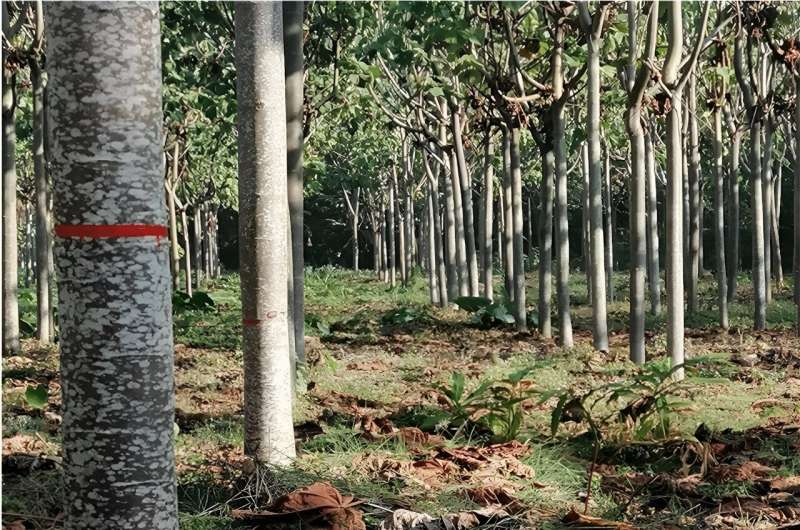This article has been reviewed according to Science X's editorial process and policies. Editors have highlighted the following attributes while ensuring the content's credibility:
fact-checked
trusted source
proofread
Balsa tree is suitable for planting in Xishuangbanna, finds study

Ochroma pyramidale, commonly known as the balsa tree, is a large, fast-growing tree native to the Americas. The tree is known for its wide use in woodworking, due to its softness and its high strength compared to its low density.
Balsa wood is commonly used as a base material in the manufacture of wind turbine blades, and it is critical to explore new regions for growing balsa trees in order to achieve carbon neutrality in the future. Xishuangbanna may be the only area in China suitable for the large-scale planting of balsa trees, as it is the main tropical area in China that is not prone to typhoons.
In a study published in Environmental Science and Pollution Research, researchers from the Xishuangbanna Tropical Botanical Garden (XTBG) of the Chinese Academy of Sciences investigated the key soil elements that influence the growth of balsa plantations and the effects of different cultivation practices on the soil environment and economic benefits in Xishuangbanna.
The study applied the practice of mulching to the cultivation of balsa trees to improve soil moisture during the dry season and increase the availability of soil nutrients.
They found that the height of balsa stems reached 5.8 m, diameter at breast height (DBH) reached 27.7 cm, and the volume of balsa stems reached 196.0 m3 per hectare (ha) after four years of growth in Xishuangbanna, China. Increasing the content of exchangeable magnesium (Mg) and phosphorus (P) in the soil is essential for the growth of balsa trees, while exchangeable aluminum (Al) inhibited the growth of balsa trees.
Furthermore, plastic film mulching not only improved the soil moisture in the 40–100 cm soil layer during the dry season and the 0–60 cm soil layer during the rainy season, but also increased the soil nitrate nitrogen content in the balsa plantation compared to the practice without plastic mulching.
In addition, the researchers found that coriander, ginger, and taro can be planted in balsa plantations with plastic film mulching, which significantly improved the overall economic benefits of balsa plantations.
"Balsa tree is suitable for planting in Xishuangbanna, and its successful planting provides an opportunity for wind energy development in China. Balsa/coriander/ginger/taro plantations with plastic film mulching can be popularized in Southeast Asia," said Liu Changan of XTBG.
More information: Chang-An Liu et al, Improved soil moisture, nutrients, and economic benefits using plastic mulchs in balsa-based agroforestry systems, Environmental Science and Pollution Research (2024). DOI: 10.1007/s11356-024-32264-7
Provided by Chinese Academy of Sciences




















